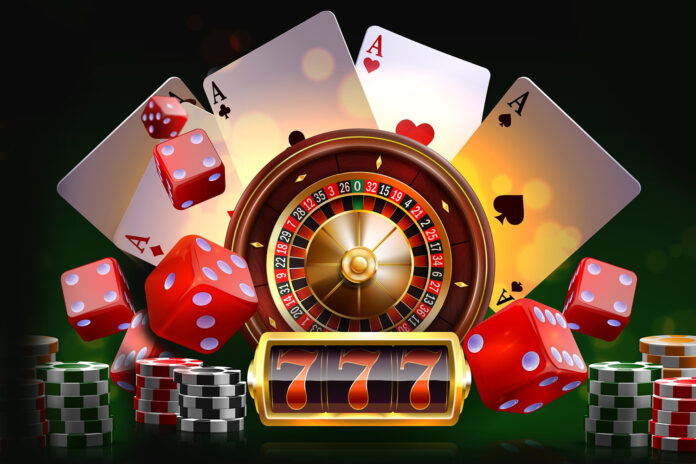Players must make crucial decisions at pivotal moments for potentially large sums of money in short amounts of times. Poker is a thinking man’s game, especially in an online poker room where players can’t rely on physical tells.
Players make these vital decisions by considering all possible outcomes and thinking about all options on multiple levels. The idea of multiple levels of thinking in poker was introduced by poker genius David Sklansky’s book No Limit Hold’em: Theory and Practice.
Levels of Thought
Level 0:What do I have and what can beat me?
Level 1: What my opponent have?
Level 2: What my opponent think I have?
Level 3: What my opponent think that I think they have?
Level 4: What my opponent think that I think they think I have?
Each successive level is to think about what your opponent might be thinking on the previous level.
Level Zero
Level 0 is the most basic of all the levels that is mastered by all poker players. Level 0 answers what kind of hands do you have and what hands can beat you? Knowing this basic information allows you to play the game.
Level One
Level 1 begins to consider your opponents cards. By thinking about what cards your opponents may be playing allows you to decide if they have one of those hands that can potentially beat you, therefore level 1 provides you with a sense of where you are in a hand.
Level Two
Level 2 adds the consideration of what your opponent thinks you may be playing. Your opponent is trying to put you on a hand just as you’re trying to put him on hand. Level 2 allows you to make plays based on your opponents’ notions.
Level Three
Level 3 continues a step further, taking in to account what your opponent thinks about what you’re thinking. Level 3 allows you to strategically bluff at possible draws and winning hands based on the texture of the board, your opponents hand, and the hand he thinks you have.
The texture of the board refers to amount of possible straight and flush draws, along with paired cards providing for sets and full houses, within the five community cards on the table
Level Four
Level 4 goes further beyond, considering what your opponent thinks about what you may be thinking about what he thinks you may have. Level 4 allows you to take other players off potentially winning hands by convincing them you hold a better hand, based on the cards on the board, what they think you think, what you actually hold, and what they could be holding.
If all this thinking makes your head spin, prepare to remain dizzy if you wish to continue playing poker on any best online casino platform. Taking your thinking to such great depths is integral to becoming a winning poker player. Poker is a mind game that requires an adaptable and intuitive strategy to continually succeed. Applying multiple levels of thought to your decisions is a sound strategic element when playing poker online.
Playing Your Hand In Poker
Any poker beginner knows that it can be intimidating to play with people who are more experienced than you are. It can also be extremely frustrating for the casual player who only plays for the social aspects of the game.
If you’re struggling against people who you know are better than you, but don’t have time to spend hours playing online or studying poker manuals, here’s how to give yourself a fighting chance of staying in the game long enough to actually enjoy it. For the purposes of this guide, it’s assumed you’re playing Texas Hold ‘Em, as that’s by far the most common form of poker played socially around the world.
Know Your Hand
Assuming you know the order of hands (one pair, two pair, and so on), the next most important thing is that you know how likely it is that your hand will win the overall hand itself. For example, if there are five of you in the hand and you draw a middling pocket pair (two cards of the same value in your two-card hand) such as a pair of eights, your chances of winning the hand probably depend on what comes down in the flop (the first three cards revealed face up on the table, available to all players involved in the hand) or even the turn and river (the fourth and fifth cards revealed respectively).
However, if you are playing “heads-up” poker – that is to say, with only two players involved, in a head-to-head format – then the chances of your pair of eights being the best hand in the game are significantly increased, even if the flop were the same as it was with five players involved.
Calculating the mathematical likelihood of an opponent having a particular hand can be done, and is done by almost all accomplished players, but as a beginner trying to do so is likely to complicate things unnecessarily. This means the most important thing is to know, roughly speaking, where you stand on the sliding scale that ranges from “unbeatable” to “I wish I’d folded”.
Don’t Bluff
Probably the one thing that every poker beginner wishes they could do is to be able to bluff their way into winning big money. Bluffing – in other words, betting as if you had a better hand than you actually do – often seems like an easy way to win money when the cards aren’t going your way, but in reality it’s a complex process which often confuses beginners.
If you’re playing with more than one or two other more experienced players, they will likely find it much easier than you think to work out whether or not you’re bluffing. Bluffing effectively takes an awareness of not only other people’s betting patterns, but your own as well, and a willingness to lose big money if the bluff doesn’t pay off.
If you’re a beginner trying to hold your own at a table full of more advanced players, your best option is to keep it simple – if you have good cards, bet. If you don’t, don’t bet. If you’re not sure, always play on the safe side and fold.










![Anso FG Reviews: UPDATED 2024 [ansofg.com] Anso FG Reviews UPDATED 2024 [ansofg.com]](/wp-content/uploads/2023/12/Anso-FG-Reviews-UPDATED-2024-ansofg.com_-100x70.png)







